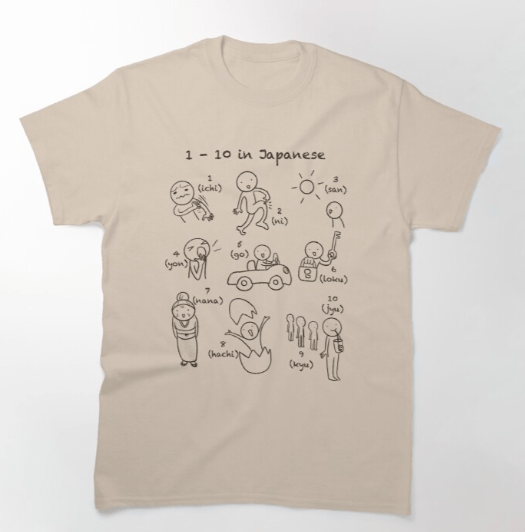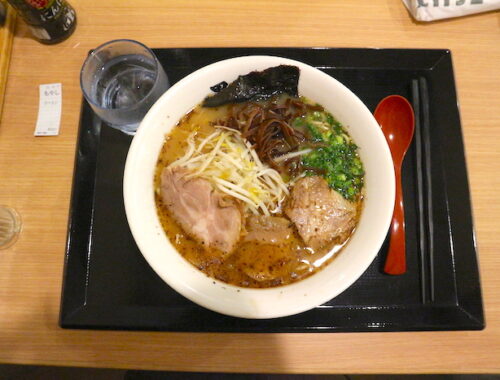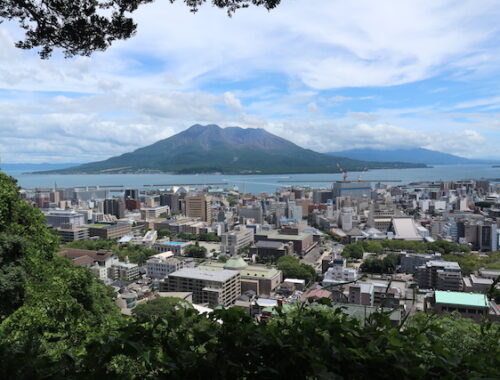
20 Essential Travel Japanese Phrases (& FREE PDF sheet)
If you’re worried about going to Japan without speaking Japanese – don’t worry. In most major cities many English signs can be seen and some restaurants offer English menus.
However, there will be some situations where you need to go by pointing, gesturing, nodding etc, and having a few key phrases up your sleeve will certainly be helpful.
No time to ‘study’ Japanese? No problem! This is a mini travel Japanese lesson as well as a phrase list which will help you to build on your previous knowledge without involving any complicated sentence structures. The aim of this list is ‘simple and ready to be used’ rather than ‘complicated and forgotten already’.
I have also divided the list in different levels according to the frequency of use (strictly my personal opinion!) so you can choose how much or how little you want to learn.
Level 1 Sushi level (It’s not Suzie, it’s Sushi.)
- Thank you
ありがとうございます Arigato-gozaimas
You will find yourself saying this one often. I think this is one of the most important Japanese words also for the Japanese and you will probably hear local people saying this to one another a lot. So, don’t be shy with your ‘arigato-gozaimas‘, say it as often as you want – we love it! If you find it too much of a mouthful, the short and informal ‘arigato‘ should do.
2. Excuse me/Sorry
すみません Sumimasen
When you want to get someone’s attention; in a restaurant, a shop, train station, asking a stranger on a street for direction etc… The word can also mean ‘sorry’ and listeners will usually know which one you mean in the context.
3. Please
おねがいします O’negai shimas
Use this in conjunction with finger-pointing and/or gestures to make requests in restaurants, shops and such. Ie: saying ‘o’negai shimas‘ whilst pointing at writing (or a photo of) ‘tall caramel latte macchiato’ means you’re saying ‘tall caramel latte macchiato please.’
If you’re up for a challenge, use 〜 o o’negai shimas (〜を おねがいします) format,
ie: Ko-hi- o o’negai shimas, (coffee please).
Check-in o o’negai shimas, (check-in please).
4. Yes
はい Hai
5. No
いいえ Iie (it’s an [i:] sound as in ‘feel’, then ‘e’ as in ‘end’)
6. Where is〜?
〜はどこですか 〜wa doko des ka
Insert the destination of your choice and you’re good to go, ie: toire wa doko des ka, (where is the toilet?)
Other useful words:
- Police box 交番 Ko-ban
- Bank 銀行 Ginko
- Convenience store コンビニ Kon’bini (Japanese convenience store is a legend. You can pay your bills, buy bus tickets or concert tickets, and so much more. It goes without saying that most of your daily essentials can be purchased here. Trust me, you will want to take one home.)
- Train station 駅 Eki
- Bus stop バス停 Basu-tei
7. How much?
いくらですか Ikura des ka
Just in case. Sometimes ¥100 store giant Daiso has things that are ¥300, ¥500… (although they are always clearly labeled!!)
8. Do you have〜?/Is there〜?
〜は ありますか 〜wa arimas ka
When you are looking for that super-rare Nintendo game in Akihabara (Virtual Bowling wa arimas ka), or if you are that person who asks for cappuccino in a Japanese tea specialist cafe (cappuccino wa arimas ka). Can also be used when you want to know if a place has certain facilities like toilet, (toire wa arimas ka).
9. English
英語 Eigo
In English please? 英語でおねがいします Eigo de o’negai shimas.
If you’re desperate, just omit the ‘de’ and say ‘eigo o’negai shimas!’ Not grammatically correct, but people will understand. I can not guarantee their ability to speak in English though.
Do you have an English menu? 英語のメニューはありますか Eigo no menu wa arimas ka (here comes that ‘〜wa arimas ka‘ structure again).
10. Good-bye
さようなら Sayo-nara
There is this beautiful old Japanese song called ‘Sayonara (1979)’ by a band called Off Course, but I digress…
11. Numbers
Here is the super easy way to learn Japanese numbers 0 – 99. Worried that you might forget? Don’t worry, wear them on a T-shirt!
I hope you’re enjoying learning Japanese with this list so far. If you would like a free PDF version you can download from here, AND it comes with 5 extra phrases!

The next level is Onigiri rica ball level…
Level 2 Onigiri rice ball level
(You know onigiri is not sushi and can name at least 3 different classic onigiri fillings.)
12. To〜
〜まで 〜made (NOT as in ‘made in Japan’, it’s ma’de.)
Will be handy when you want to express where you’re heading. For example at the train station: ‘Kyoto ma’de (des)’ which is ‘To Kyoto’ (with des = polite, without des = casual).
In case you want to learn to say ‘A ticket to Kyoto please’ it’s ‘Kyoto ma’de no kippu o o’negai shimas‘.
13. What time
何時 Nan ji
Bring up in pitch at the end just a bit to say ‘what time? (Nan ji?)’
If you want to say ‘until what time?’ it’s ‘Nan ji ma’de?’ This can mean ‘what time do you close?’ and is useful when you need to know the closing time of shops or restaurants.
14. From
から kara
You learnt ‘ma’de‘, now you need to know ‘kara‘ as well. How do we say ‘from what time?’ You guessed it, it’s ‘Nan ji kara?’
And I can hear your clever brain clicking and thinking: ‘wait, does that mean I can say Kyoto kara – from Kyoto, too?’ That is right!
15. (Does this) go to〜?
〜に行きますか 〜ni iki mas ka
Useful when you want to check if a train or a bus really goes to your destination. ‘Shibuya ni iki mas ka? (Go to Shibuya?)’
You can also make a statement out of it simply by taking off the question marker か ka.
渋谷に行きます Shibuya ni iki mas = Go to Shibuya.
16. (I’m/it’s) Ok
だいじょうぶです Daijo-bu des
You’re standing outside the shop waiting for your friend, a keen Japanese person decides that you’re lost and tries to help you, you say ‘daijo-bu des (I’m ok)’. A waiter accidentally knocks down your bag, nothing is broken, you say ‘daijo-bu des (it’s ok)’.
Would you like to know how to say ‘are you ok/is it ok?’ Easy! Simply add ‘ka か’ which is a question marker at the end and say ‘daijo-bu des ka?’
17. Is card ok?
カード だいじょうぶですか ka-do daijo-bu des ka
In high-tech Japan, cash is still king. Although cashless options are increasing especially since COVID19, it is always a good idea to bring cash and/or ask the staff if they take card payments. If you want to say ‘can I pay by card?’ it will be ‘ka-do de hara’e mas ka?’ but this simple ‘ka-do daijo-bu des ka? (is card ok?)’ sentence will do just fine specially when you ask at the cashier.
18. Good afternoon (and kind of ‘hello’)
こんにちは Kon’ni chiwa
You all know this one. Since Japanese does not have ‘hello’, I guess this is the closest as ‘good afternoon’ can be used during the waking hours of most average people.
- Good morning おはようございます ohayo-gozaimas
- Good evening こんばんは konbanwa
19. I don’t understand
わかりません Wakarimasen
Please feel free to say this when you don’t understand our ‘Japangrish’.
20. (It’s) different/wrong
ちがいます Chigaimas
Wrong price? Incorrect change? Wrong dish arrived? The room is different to the one you have booked? Say ‘chigaimas‘!
Congratulations for coming this far and I hope you found this list useful. Click here to download the PDF version for free (+ 5 extra phrases!) or you can use the form below.
I really hope we can travel to Japan again soon (August 2021). For up to date information, please visit Ministry of Foreign Affairs of Japan website: https://www.mofa.go.jp/ca/fna/page4e_001053.html






